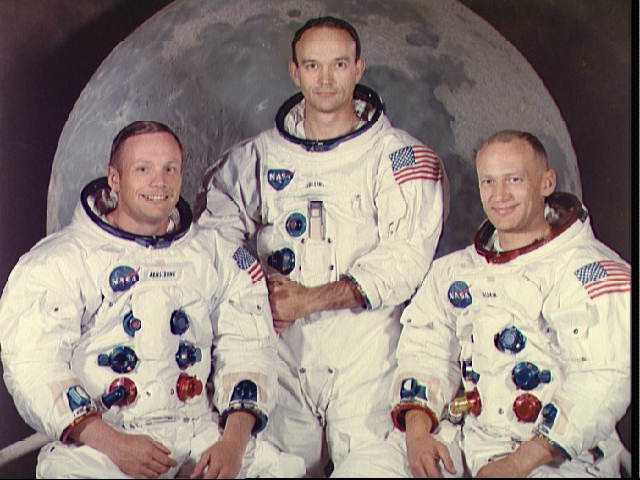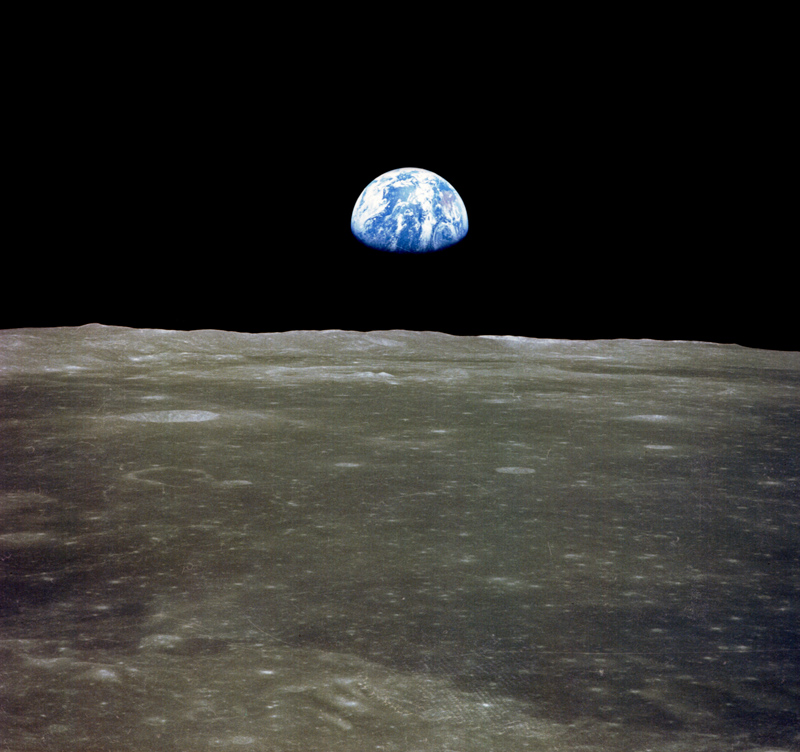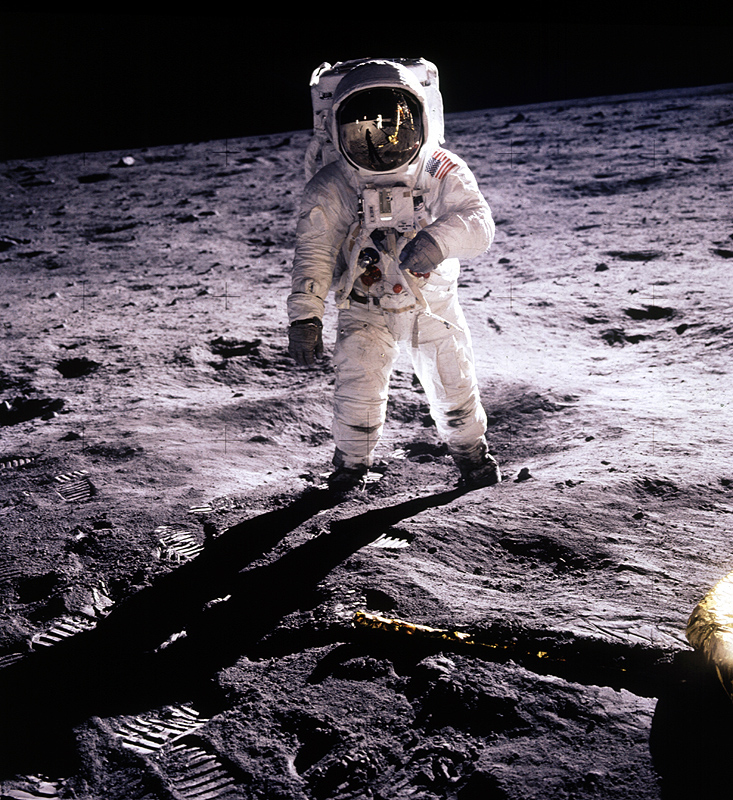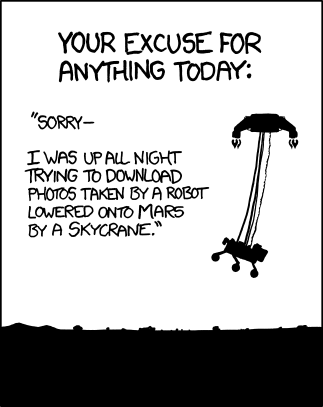"Mr. Armstrong commanded the Apollo 11 spacecraft that landed on the moon on July 20, 1969, capping the most daring of the 20th century’s scientific expeditions. His first words after setting foot on the surface are etched in history books and the memories of those who heard them in a live broadcast.“That’s one small step for (a) man, one giant leap for mankind,” Mr. Armstrong said."
I was a child then, watching in the living room, in black-and-white, way past bedtime.
This month, when #Curiosity landed on Mars, I was an adult, watching livestreaming on my laptop, way past bedtime.
Here are images and text, from the NASA archives.
The crew of Apollo 11:Commander Neil A. ArmstrongCommand Module pilot Michael CollinsLunar Module pilot Edwin E. Aldrin, Jr.May 1, 1969. (NASA photo ID S69-31739)
On July 20, 1969, after a four day trip, the Apollo astronauts arrived at the Moon.This photo of Earthrise over the lunar horizon taken from the orbiting Command Module is one of the most famous images returned from the space program, although even the astronauts themselves cannot remember who actually took the picture.The lunar terrain shown, centered at 85 degrees east longitude and 3 degrees north latitude on the nearside of the Moon is in the area of Smyth's Sea.
(NASA photo ID AS11-44-6552)
Neil Armstrong took this picture of Edwin Aldrin, showing a reflection in Aldrin's visor of Armstrong and the Lunar Module. This is one of the few photographs showing Armstrong (who carried the camera most of the time) on the Moon.
The tasks assigned to both astronauts were carefully choreographed and practiced back on Earth, and Aldrin was busy setting up scientific experiments among other responsibilities.Apparently taking pictures was not as carefully planned. Aldrin later said, "My fault, perhaps, but we had never simulated this in training."
(NASA photo ID AS11-40-5903)














